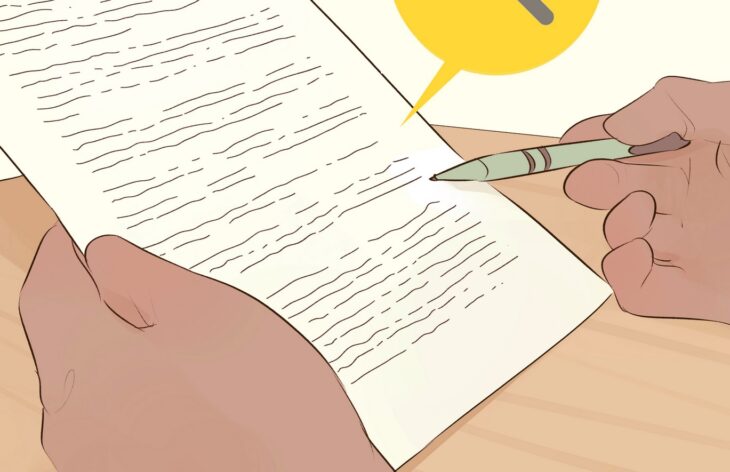It’s an important part of your academic success. Universities and colleges include essay assignments in the curriculum to develop research and writing skills in their students.
Essay writing is not an unusual thing, it’s common in the modern educational culture. Unfortunately, still many students have no idea about writing an impeccable write-up under the professor’s instructions.
Do you need guidance on structuring an essay? If yes, then you can come to the right spot.
Creating a structure can help you save time and effort. The best way to write an essay is to make an outline. Having an exact plan gives you a track to follow. Let’s check out how you can structure an essay without wasting time!

Source: intelligenthq.com
Contents
How to Structure an Essay?
Before you start writing, make sure to be aware of the format. You can buy already written essays online at essay48.com to see what professionally written essays look like. They can be of great help if you have a deadline on the verge.
As a standard practice, every essay consists of three main sections. They include an introduction, body, and conclusion. These are the basic components that every essay should possess. However, you can feel free to be flexible in writing. Don’t be anxious about following any hard and fast rules here.

Source: homeworkhelpglobal.com
1. Introduction
An introduction is the part of your essay where you introduce the subject to readers. Try to make it attention-grabbing by adding stats, facts and figures.
This is where you hook the reader and attract them to read more. You can use words and phrases that you think can catch the reader’s attention. Use a quote, ask a question, and try thinking out of the box.
Remember, the rest of your classmates will also be doing the same thing. You need to make your essay different and exciting to score good marks. An average essay with nothing interesting can’t help you win great feedback.
Don’t make it too long. Try giving an overview of the subject so that the reader can have a clear idea of what’s being discussed. Don’t use difficult words or expressions. Make the introduction short and clear. A reader is likely to lose interest if he finds it hard to read.
Once you are done writing an introduction, assume yourself as a reader and read the paragraph loudly. See if it has the potential to make you feel “Wow.” If not, make adjustments as discussed.

Source: Grammarly
2. Thesis Statement
The next thing in the essay after the introduction is the thesis statement. This is where you briefly mention your argument or main concept of the essay.
Although it’s brief, yet it should serve as the roadmap of the complete discussion that you are going to write next. Don’t juggle with multiple ideas, but mention just one core concept. Talk about the key points that you will be discussing in your essay.

Source: npr.org
3. Body
This is where the discussion begins. The body can include up to 5 paragraphs or even more if needed. You need to explain arguments or points mentioned in the thesis statement.
Don’t discuss more than one point in a single paragraph. Talk about just one point in each paragraph so that your essay can look organized and well-structured. Describe all the important details relevant to your point.
Text in paragraphs can reflect your personal opinion, research, and experiences of others. Things can vary from assignment to assignment since not all essays are alike. There could be a few dissimilarities that need a distinct approach. So treat your essay according to the given instructions and subject.
Don’t talk about irrelevant stuff while discussing arguments in body paragraphs. Stay connected to the main point that you have already mentioned in the thesis statement. Everything you talk about should support your opinion about the given topic.
You can follow the TEEL structure while creating paragraphs. This includes starting your paragraph with a Topic Sentence and then continuing with Explanation, Evidence, Comment, and Link.

Source: newyorker.com
4. Transitions
Transitions define how effectively you connect paragraphs. They help you maintain a good flow of content throughout. You can use transitions between paragraphs to keep the reader engaged. They help in joining concepts and ideas together. Use transitions where you feel it’s necessary to join sentences or texts together. Always make the correct use of transitions to avoid embarrassment.

Source: wikiHow.com
5. Conclusion
A conclusion is where you summarize everything at the end of the essay. It can include a flashback from the introduction and body paragraphs. This is where you give a final opinion about the given subject. Make the readers feel as if they are reading a resolution of ideas. Don’t talk about new concepts and ideas here. Just conclude what you have already written above.

Source: lrostaffing.com
6. References
In most cases, essays include research and stats from other sources. You need to give citations to make your work look credible. Give credit to sources that you used while doing the research work. You can create a bibliography page at the end of the document and follow a specific format to give references.
Tips to Make Essay Writing Feel Less Overwhelming
One of the main reasons why students procrastinate on an assignment is that they get overwhelmed. They don’t know how to get started without having a solid starting point.
Now that you have a clear idea about creating a good essay structure, let’s discuss top tips to make your essay feel less overwhelming while writing an essay.

Source: Pinterest.com
Choose an Interesting Topic
If the teacher hasn’t instructed you to write about a specific topic, start exploring ideas and find a theme according to your interests. This will help you make essay writing less overwhelming.
Even if the teacher has already commanded you to write on a given subject, discover which aspects of the subject attracts you more. Try to build interest so that you can work with dedication and commitment.
Stay Highly Organized
One of the core reasons why students feel overwhelmed is their chaotic routine. Prepare your study schedule and stick to it. Don’t procrastinate until the job is completed successfully. You should have no lame excuses to talk about. Just sit and start writing as per the set schedule.

Source: DoMyWriting.com
Conduct Research
Another reason for feeling overwhelmed is the lack of research. When you spend proper time on research related to the subject, you become confident.
Don’t start writing an essay with little details. Make sure you have plenty of sound ideas before you go. Note down important things while you research on the internet. You can bookmark important web pages. Use all the sources including libraries, books, notes, materials, videos, audiobooks, and the internet. You should have no problem getting plenty of relevant information to prove your verdict.
You can also get relevant study resources from the college or university library. Research can take some time, but it can ensure the quality of your essay. So, never underestimate the real power of research especially when it comes to writing an investigative essay.

Source: www.tyg.jp
Create Outline
Having an outline ready can save you from getting overwhelmed. You get a clear roadmap to writing a complete essay. Those who don’t have a clear idea often get confused. Follow the suggestions above to create a basic structure and add relevant information in the form of complete sentences.
Proofread
Once you are done writing an essay, don’t feel you have nothing left to do. You can’t say anything for sure about the accuracy and authenticity of your write-up without proofreading it. Many students skip this important step and submit their work without checking, which often results in poor grades.
It’s a great idea to get your essay proofread by someone else. If you have a credible person in your family or friends, request them to check your work.

Source: freelancewriting.com
Edit and Revise
Once you are finished with proofreading, make adjustments where needed. Don’t leave a single point unaddressed as it can dilute the validity of the entire document. You do not have to make a list of mistakes and then correct them one by one. Make adjustments right away whenever you find something wrong. Collect feedback from your friend and ask if they have any recommendations to make the essay look nicer.
Conclusion
Essay writing shouldn’t be difficult if you follow the right approach. Creating an outline and having the full structure ready can take the burden off your shoulders. All essays have a standard structure including an introduction, thesis statement, body, and conclusion. Following it shouldn’t be a problem even for an average student. However, proving your point with strong evidence, stats, and interesting facts can help you win the heart of the professor.
